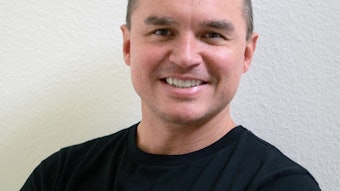
By Cheryl Whitman, founder of Beautiful Forever Consulting
What does it take to “sell” a prospective patient on your services, your procedures or your products? It takes a few things – but only a few. In fact, there are just four. And the last one in particular is absolutely vital to closing the sale – yet it’s the one selling factor most often overlooked by aesthetic practitioners.
The Four Selling Factors
First, making a sale requires the attention of a person who is in the market for the kinds of services you have to offer, the procedures you perform or the products you sell. That interest in what you offer is what makes her a prospect.
Next, she wants to see some indication that you can deliver. She’s looking for before-and-after images, patient testimonials or some other believable indication that you can meet her needs professionally.
Next, you have to actually offer what she’s looking for at a price she’s willing to pay – and that doesn’t necessarily mean offering her the lowest price. There are two ways that pricing can rule you out. First, if you’ve priced yourself beyond her budget, she’s not going to become a patient because she can’t afford your services no matter how much she’d like to do business with you. However, if you price yourself too low, you may lose her confidence in your professional ability. To succeed here, you have to find that sweet-spot price – just like Goldilocks: Not too hot, not too cold, but just right.
Finally, you need a deal-closing sales tool. It is here where most potential sales to fail. You have a prospect, you offer what she’s looking for, the price is right, but she doesn’t become your patient. Why? Because you haven’t given her a reason to select you, to trust you, to literally put her life in your capable hands.
When a prospect goes to your website, the first thing she looks for are those few key indicators which tell her that you have the potential to become her provider: Before-and-after photos, patient testimonials, services offered and, finally, your bio. This is where a prospective patient ultimately decides is she should trust you with her aesthetic concerns. The bio is the deal-closer.
A Winning Bio
Look at your current bio. What do you give your prospective patient? If you’re like most aesthetic practices, you give your CV provides the bare facts.
- Where you went to school
- Where you did your internship and residency
- The awards and board certifications you’ve earned
- The papers you’ve written
As Sergeant Joe Friday used to say on Dragnet, you’re giving your prospect “just the facts, ma’am, just the facts.”
But that may be not enough to close the deal. Consider this:
Most prospective patients don’t know the difference between Johns Hopkins University and Cartagena Community College and Medical School. She can’t make heads or tails of board certifications. She doesn’t know the difference between FAAC and FAKE. You’ve given her facts about yourself, but without putting them in a selling, persuasive context what you’ve told her about yourself tells her nothing about what you can do for her. Even more importantly, you haven’t told her why you’re better for her than any other doctor who offers the same procedures.
In short, you didn’t create for her a “Selling Bio,” a deal-closing marketing tool that takes your accomplishments and abilities, then presents them in a way that wins confidence, engenders trust, and, most important of all, motivates her to pick up the phone.
So what do you need to create a selling bio?
First, you have to take each fact and present it in a way that is persuasive of your ultimate goal. You have to explain why a prospect should trust you with her looks and her health. To do that, you have to humanize yourself in a way that makes her want to trust you. Some things to avoid:
- Presenting your bio in the form of a resume, with a long and chronological list of your education, your practice experiences, your accomplishments and your professional standing.
- Presenting your life in a way that makes you seem out-of-reach (socially and professionally) to the prospect. You are more educated, more experienced, wealthier and more prominent in the community, but none of that makes you likable or trustworthy.
Knowing some things to avoid, here are some things to include in your website bio:
- A life story that relates to your patient’s life, rather than to your education and accomplishments.
- Examples of your life that make you seem human and accessible, such as hobbies, interests and family, so prospective patients see you as someone with whom they might want to have lunch.
- Details about your accomplishments that are presented in a way that builds trust, by making her see just how your accomplishments will help her.
- Quotes or statements from you about why you want to help your patients, how much that means to you.
- A list of your primary services, including an explanation what they are and how many you have performed. This engenders trust in you as The One Person who should be providing those services to her, your prospect.
- Finally, from first word till last, this selling bio should be about the prospective patient, not you. Sure, you’re telling your personal story, but each element of that story needs to reach out to the prospect by touching her in a personal way.
If that sounds like something that’s challenging to do, you’re not alone. Fairly few medical practitioners consider themselves competent wordsmiths. If that’s the case, consider hiring a professional copywriter or consultant.
In the right hands, the right selling bio can make a significant difference in the closure rate from prospects who visit your otherwise professionally created website. So, if you want to close more prospects, make sure your website has all of the above-mentioned elements – a regular stream of visitors, a service mix that meets their needs, prices that are in their “sweet spot,” and most of all, a selling bio that closes the deal.
Image courtesy of Wikimeda Commons/Peter Astbury











